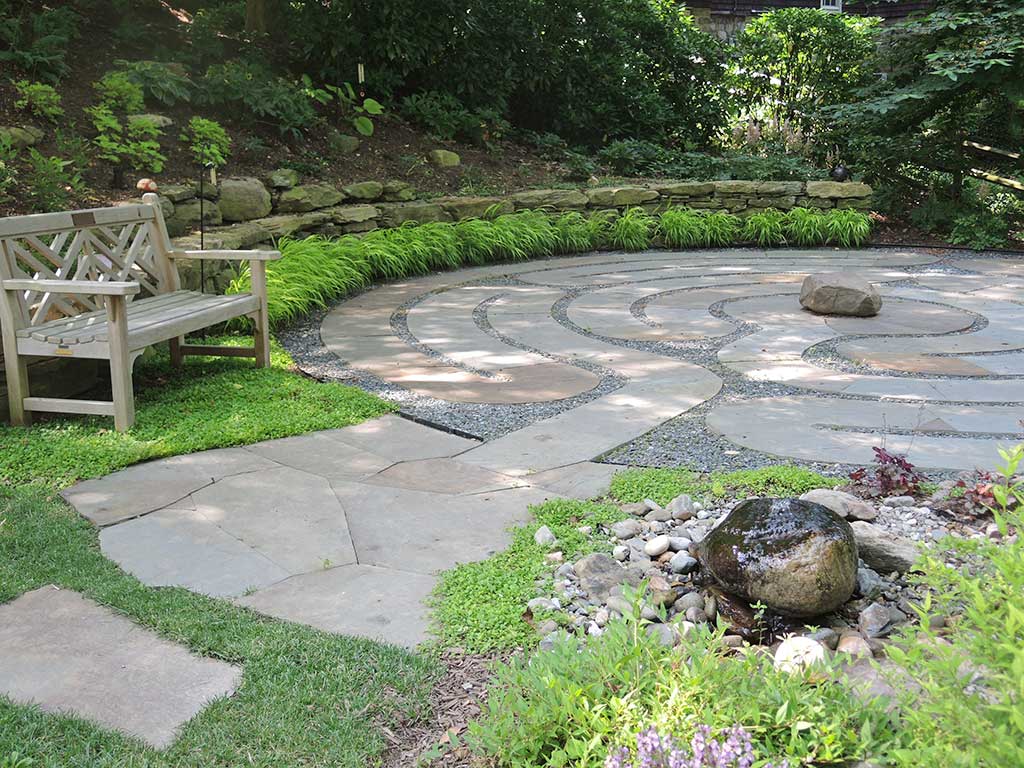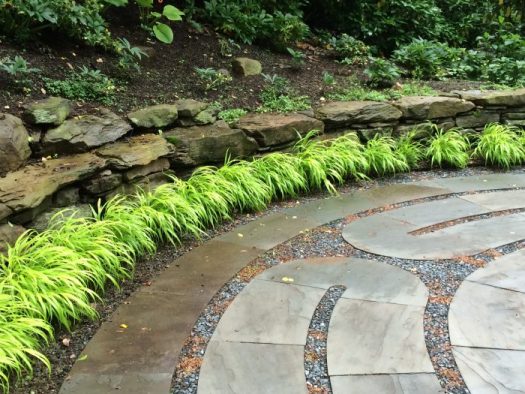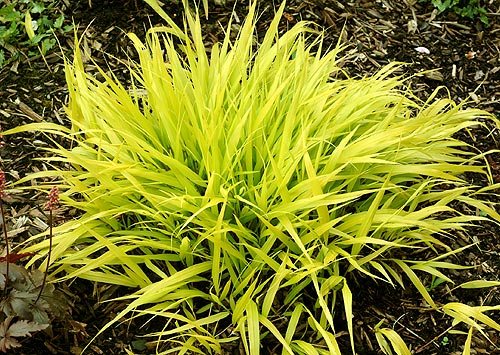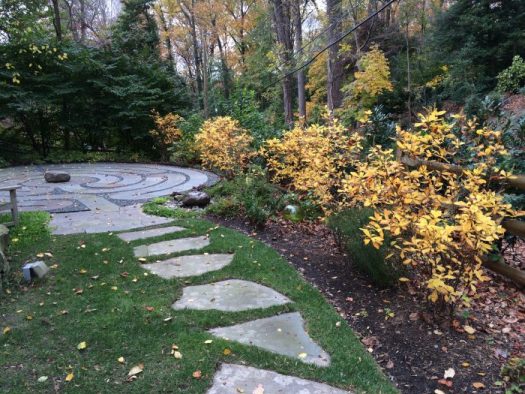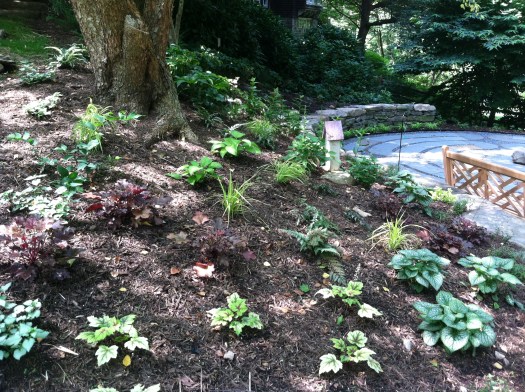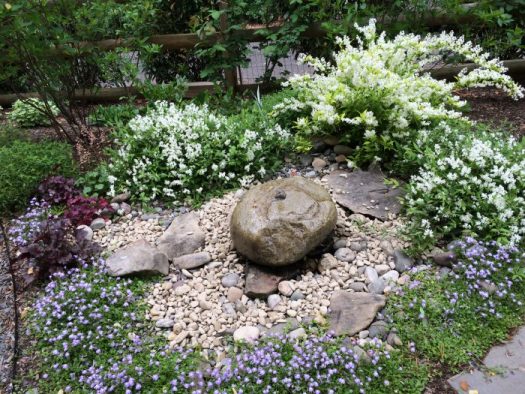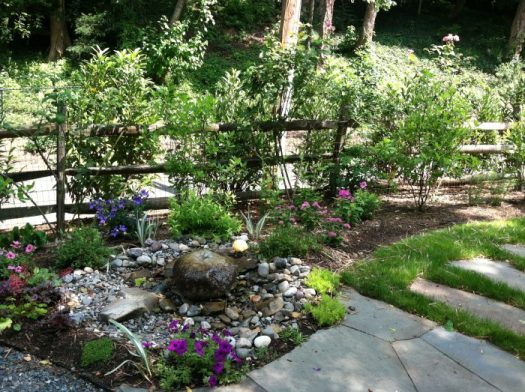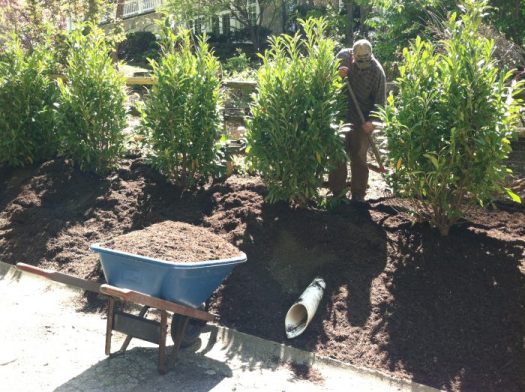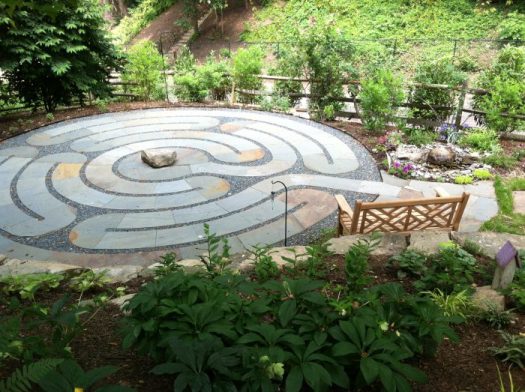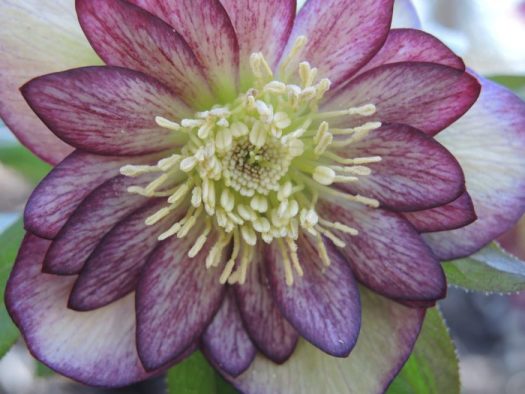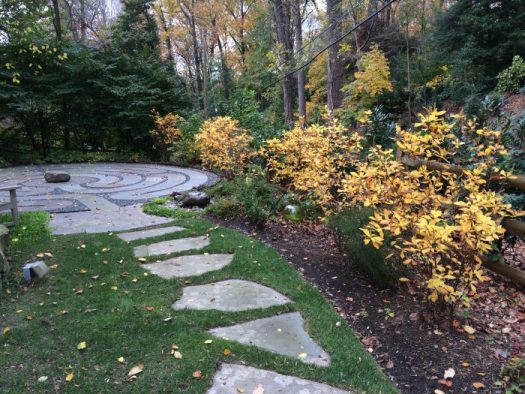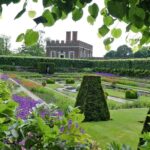Last year, I posted about installing a stone labyrinth for a client. We started in the fall, worked through the winter, and just finished up the spring plantings. Go to Healing Labyrinth-Part 1, Part 2, and Part 3, to see how I created and implemented the design and installation.
The theme for the plantings was pollinator-friendly shrubs and perennials to surround and embrace the labyrinth to soften the harshness of stone and to bring nature in. When it came time to plant, I had to consider that the site is shady to part sun, with some parts in full sun, so I had to use an entire spectrum of plants that would attract pollinators.
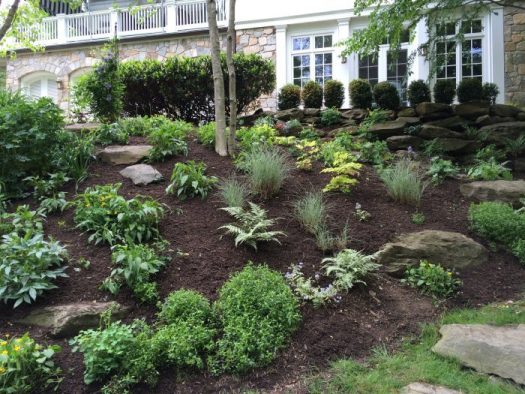
Where the wall surrounds the labyrinth pathway, I left a small space of 6″ to plant something simple but beautiful to soften the stone edge in the shade. Hakenochloa ‘All Gold’ was chosen for its bright color in the shade and its graceful form. It has no attribute as a pollinator-friendly plant but was perfect for the spot. A slow grower that stays under 12″ high, the grass will not outgrow its space and is very low maintenance.
The only plantings that were original were extremely fragrant pink climbing roses on the fence. I kept them as a backdrop for the new plantings.
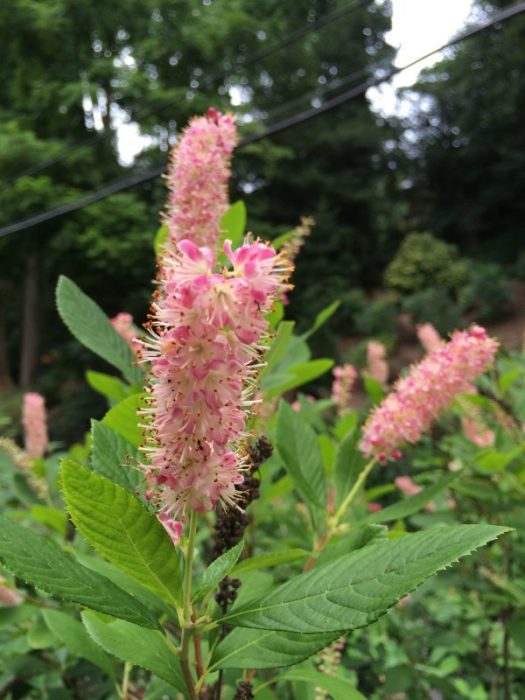
The garden surrounding the labyrinth is in partial to full sun and I went wild with the pollinator-friendly plants. The main shrub that I used was Clethra ‘Ruby Spice’ – seven of them spotted around the space. Clethra is a highly fragrant deciduous shrub that blooms in July and August in shade and partial shade and is frequently visited by an array of pollinators. The racemes of dark pink flowers last for weeks and the foliage turns a bright yellow in the fall.
Butterfly bushes were also used to give late summer color as well as perennials such as stachys hummelo, salvias, sedum, vernonia, hibiscus, coral bells, and nepeta. A few annuals were selected for color and pollinator appeal – petunias and pentas.
The upper slope over-looking the labyrinth was in full shade and was planted with colorful foliage plants-coral bells, hostas, carex, toad lily, Lenten Rose, tiarella, brunnera, lamium, heucherellas, and woodland phlox to give texture and brighten the shady area.
Under the teak bench, I planted Mazus, a steppable creeping plant with tiny purple flowers.
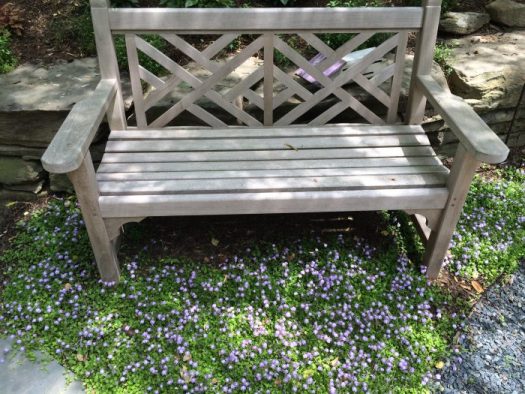
In and among the rocks of the water feature, I planted several Deutzias for spring bloom, and variegated Iris, sedums, annuals, coral bells, and balloon flower. The water feature looked very stark without any plantings, so I was careful to plant things next to and within the rocks surrounding it so that plants would cascade over it.
To frame the picture, and provide some privacy, a screen of Skip Cherry Laurels was planted behind the fence to anchor the new space. These will eventually grow up to over 8 feet and knit together for a nice hedge.

